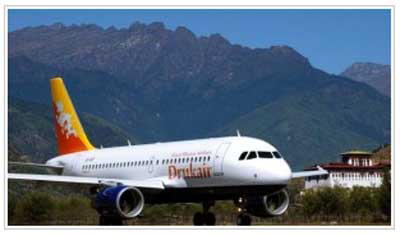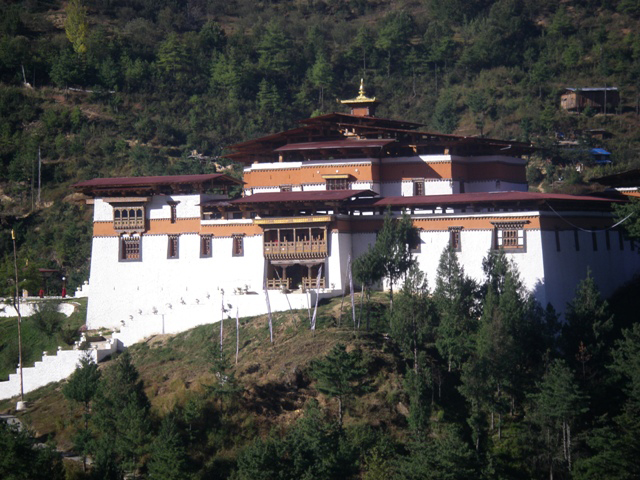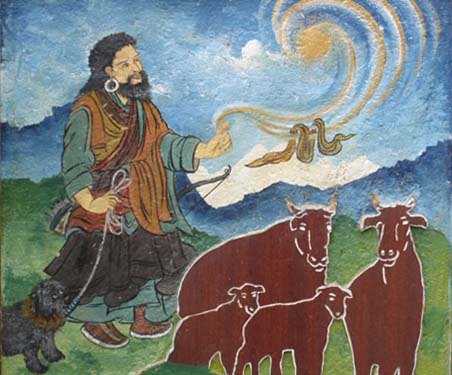
Punakha Winter Trek
- 11 Nights 12 Days
- Western Bhutan
Duration:
11 Nights 12 Days (Trek- 6 Days)
High Season- March, April, May, September, October
& November
Low Season- January, February, June, July,
August & December
| Jan | Feb | Mar | Apr | May | Jun | July | Aug | Sept | Oct | Nov | Dec |
Max.Elevation:
3,400 m
Highest Camp: 3,360 m
Standard: Easy
Best Seasons: September to May
Start: Dechencholing (Thimphu)
Finish: Zomlingthang (Punakha)
Summary: The best seasons for this trek are September to May. But due to the low altitudes, the trek is possible throughout the whole winter. The trek is the old walking route from Thimphu to Punakha.
Itinerary Outline:
Day 1: Arrive Paro
Day 2: Paro Sightseeing
Day 3: Paro - Thimphu
Day 4: Thimphu Sightseeing
Day 5: Dechencholing - Shong Pang (Trek Starts)
Day 6: Shong Pang- Dopshing Pang
Day 7: Dopshing Pang - Chorten Ningpo
Day 8: Chorten Ningpo – Zomlingthang
Day 9: Zomlingthang - Limukha
Day 10: Limukha - Chungsakha/Wangdue (Trek Ends)
Day 11: Wangduephodrang - Thimphu
Day 12: Thimphu - Paro and depart
Detailed
Itinerary:
 Day
1: Arrive Paro
Day
1: Arrive Paro
The flight to Paro on a clear day is one of the most spectacular of all mountain flights. One can see Mt. Everest, Mt. Kanchenjunga, Makalu and peaks in Bhutan such as Jhomolhari, Jichu Drakey and Tseringang. Be received by your Bhutan Rebirth representative and checked into your Hotel. Evening take a stroll around Paro market. Overnight at the Hotel in Paro.
Day 2: Paro Sightseeing
In the morning, you will visit the Drugyal Dzong (Bhutan Victory Fort), which was built in 1646 to commemorate Bhutan's victory over the Tibetans in the 1600s. On a clear day you can see the captivating view of Mount Jhomolhari, Bhutan's second-highest mountain at 7,314 metres. Then you will hike to Taktsang (the Tiger's Nest) Monastery, which is Bhutan's most famous monastery. It is perched precariously on the edge of a steep cliff 900 m above the Paro Valley floor. Visit the Monastery and hike back to Paro. In the evening visit a traditional farm house which offers opportunity to mingle with local people and their life style. If you wish, you can end the day with a traditional Bhutanese dinner with buttermilk (dao in Dzongkha). Overnight at your Hotel in Paro.
Day 3: Paro - Thimphu
Drive to Thimphu which takes about 1 hour, a distance of 65 km. Check in at your Hotel in Thimphu. After some rest, visit the following places: Memorial Chorten (a huge stupa) built in memory of the Third King who reigned the Kingdom from 1952 - 1972, the National Library where ancient manuscripts are preserved. Also visit the Tashichhodzong ('Dzong' means fortress). This is also the Main Secretariat Building. This massive structure houses part of the Government Ministries, office of the King and the Throne Room. It also houses the State Monastic Body and the living quarters of the Senior Monks. Overnight at the Hotel in Thimphu.
 Day
4: Thimphu Sightseeing
Day
4: Thimphu Sightseeing
Visit Semtokha Dzong (left). This is the oldest fortress in Bhutan, which was built in 1629 A.D by Shabdrung Ngawang Namgyal. Visit the Woodcraft and Painting School where traditional art and crafts are still kept alive. Visit the Handicrafts Emporium where Bhutanese textiles and other arts are displayed and can be purchased. After lunch drive 14 km to north of Thimphu to visit Tangocheri Monastery. Early evening will be left free to stroll around Thimphu valley and its town. Overnight at the hotel in Thimphu.
Day 5: Dechencholing - Shong
Pang (Trek Starts)
(Four to five hours, ascend 860 metres to a camp altitude of 3,360
metres above sea level)
Drive north up the valley towards Dechenchholing
Palace, following the Thimphu Chhu ('Chhu' means water, in this case,
river.) The Thimphu Chhu is also known as the 'Wang Chhu'. The transport
will reach you up to Pangrizampa, the last road point. From here the trek
starts towards Shong Pang, and leads you through some beautiful villages.
The camp will be just above Chamina village.
Day 6: Shong Pang- Dopshing Pang
(Seven to eight hours)
The trek trail ascends gradually up
till you reach a pass called Sinchula (3,400 m). From this point, if the
weather is clear, one can see Phajoding monastery, which is just above
Thimphu. After two km, you can view Thinleygang village, Talo Monastery
and the motor highway towards the ancient capital of Bhutan, Punakha.
The trek from the pass is more or less downhill till you reach the campsite.
Day 7: Dopshing Pang - Chorten Ningpo
(Eight hours, camp altitude 2,700 m)
The trek to Chorten Ningpo is rather
gradual and will take trekkers through thick forests, villages and rice
fields. Chorten Ningpo is linked to Drukpa Kuenley, better known as the
'Divine Madman'. The campsite is right in front of the temple.
Day 8: Chorten Ningpo – Zomlingthang
(Two to three hours)
For about two to three hours, the trek trail will lead you through several villages until you reach a motor road. From the motor road, you will follow the road towards Punakha.
Day 9: Zomlingthang - Limukha
Follow the motor road till Punakha Dzong and then cross the Phochhu River (Male River), the river that drains the remote Lunana region. You will have a steady half-day climb into a forest of scattered long needle Chir Pines. Make sure to fill your water bottle before leaving Punakha as there is no water on the way for a couple of hours. You will have a wonderful view of Punakha valley and the Dzong. If the weather is clear, you can see some snow peaked mountains to the North. The campsite is near Limukha village, alt. 2,250 m.

The trek trail ascends gradually up through a thick forest of oak species and rhododendrons till you reach the pass called Dochula. Then descend through the thick forest leading to a small monastery dedicated to a lama (see painting left) called Drukpa Kuenlay (popularly known as the Divine Madman). This holy, legendary lama is often credited with introducing into Bhutan the practice of painting phallus on walls and placing statues of them on rooftops to drive away evil spirits. From Chungsakha you can look across the valley to Samtengang on the ridge to the south. Walk down hill till you reach the motor road and then drive for about half an hour to Wangduephodrang. Overnight at the Hotel in Wangdue.
Day 11: Wangduephodrang - Thimphu
After breakfast, drive to Punakha Dzong viewpoint at the north end of the Punakha Valley. The Punakha Dzong lies between two rivers known as Phochhu and Mochhu, which means ‘Male River and Female River’. It houses the District Administration Office and the winter residence of the State Monastic Body and the Je Khenpo (Chief Abbot). Drive up to Dochula pass and stop for a hot cup of tea and some snacks. Continue to drive down to Thimphu. Evening: Guests can either rest in the hotel or stroll in the town.
Day 12: Thimphu - Paro and Depart
Be seen off by the representative of Bhutan Rebirth and Farewell.. Hope to see you again!!
Note: These trekking itineraries have been designed based on past experiences of visitors to Bhutan and what they experienced about various trek routes. They show the actual duration of the trek only. They can be combined with other cultural tours or treks. The treks are such that you can gain the maximum out of this experience without exhausting you. The treks may depend on seasons. However, these readymade itineraries may not be convenient for some visitors. That is why we would be very happy to, together with you, design a new itinerary to fit all criteria and interests as desired by you. Please write to us with your special interests and/or requirements at bhutanrebirth@gmail.com.
